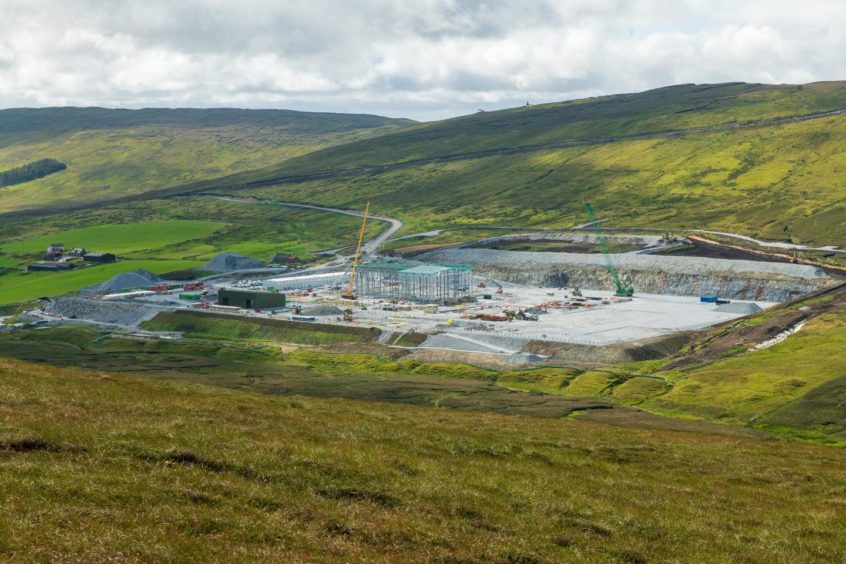
Suspected unexploded ordnance has been found along the route of the planned subsea cable that will link Shetland to the mainland.
SSEN Transmission, which is heading up the £660 million project, recently completed its seabed surveys along the proposed path for the high voltage direct current (HVDC) cable.
It is now having to carry out “follow up operations” after the studies threw up what is thought to be unexploded bombs.
SSEN Transmission is now aiming to establish whether the planned route for the subsea cable can be adjusted or whether the ordnance will have to be removed.
The cable will transport electricity from Shetland to the switching station in Noss Head, Caithness, connecting the island to the national grid for the first time.
It’s a fundamental part of SSE Renewables’ Viking onshore wind farm and will allow green energy to flow from the development into homes across the UK when it starts up in 2024.
Though separate, the two projects are running in tandem with one another.
John Scott, who’s heading up the construction of the Kergord HVDC converter station in Shetland for SSEN Transmission, said: “The activities on the ground are around cable installation. We’ve ducted about 3 kilometres out of the 9km and about 60% of the land cable is manufactured. It should be delivered around the end of the year and then we’ll start installing it.
“In terms of subsea, we’ve just finished our seabed surveys and we’ve got a couple of follow up operations to do.
“There’s some suspected unexploded ordnance we need to go and do a bit of specialist investigation on. We will either then reroute around or remove and destroy it if we can’t redirect.
“We’ve also identified a number of boulders on the seabed. A specialist vessel will be mobilised to go and effectively grab the boulders out of the way to clear a smooth area of seabed along the full route.
“That will take place this year and then in April 2022, we will start trenching with cable lay taking place around July.”
Despite the obstacles, Mr Scott said the project is making “remarkably good progress” given the challenges of Covid and is “currently on program”.
Some Shetlanders have previously voiced concerns about the prospect of being reliant on a huge, 160 mile long HVDC cable for energy.
Local campaign group Sustainable Shetland said earlier this year that a lack of clarity around what will happen in the event of a wire outage means many residents have trepidations.
At the time, SSEN Transmission, a subsidiary of SSE, said it was working to draw up a “cost effective” backup solution to safeguard security of supply.
SSEN was recently forced to reconnect one of the decommissioned cables connecting Orkney to the mainland after a fault with one of the new wires.
Mr Scott said: “This is a fully protected system. I can’t comment on the specifics of the Orkney one but in general, a lot of historic cables aren’t fully protected and they’re not buried.
“It’s a costly exercise to bury a cable but it’s something that we do for a transmission asset. It’s about energy security, we need to fully protect that wire and minimise the risk of any damage. That’s a primary license obligation to us as a transmission operator.”

